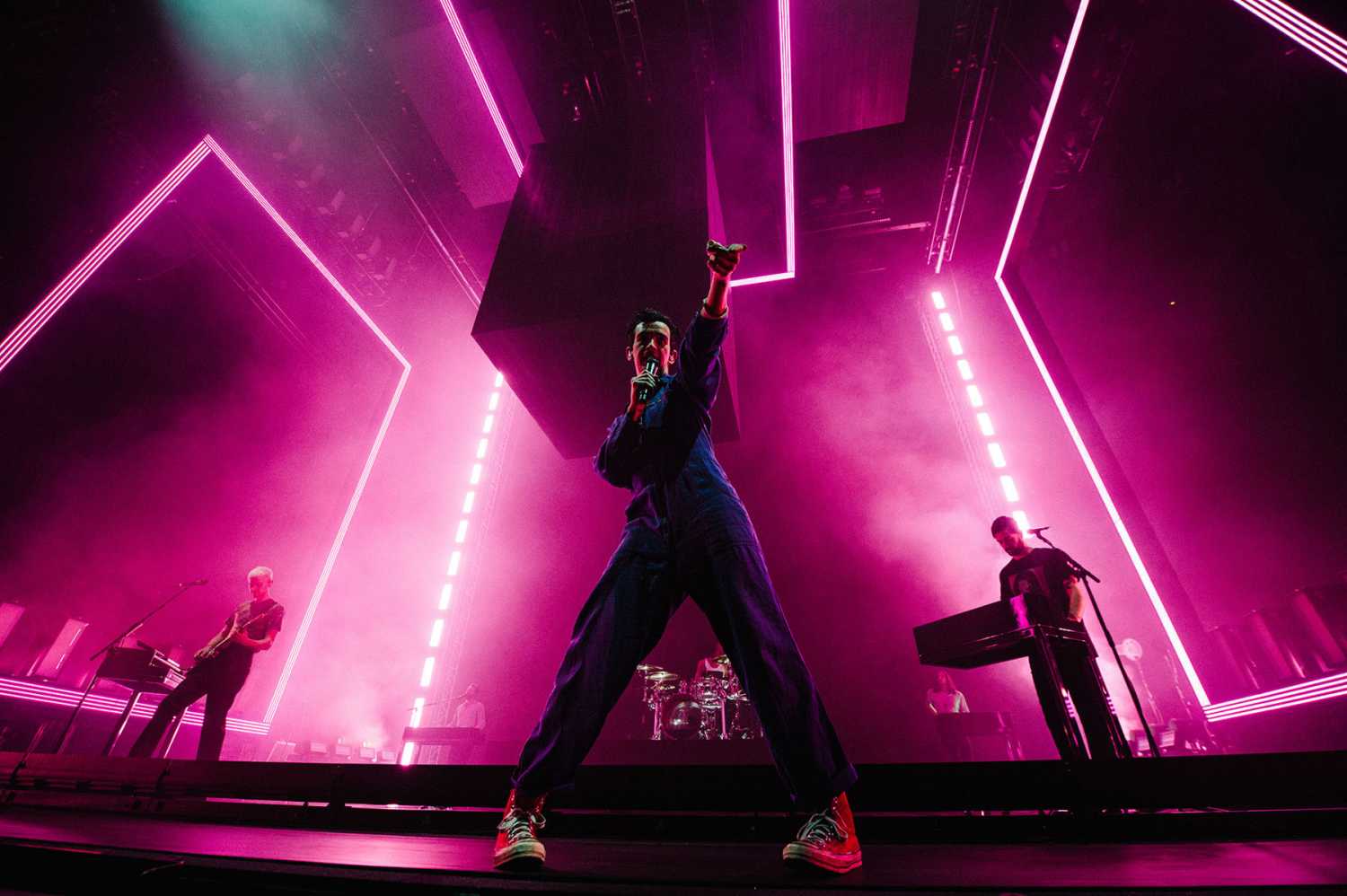A Brief Inquiry into Kinesys for The 1975
- Details

Lighting and visual designer Tobias Rylander enjoys a productive ongoing dialogue with the band - in particular lead vocalist and creative director Matthew ‘Matty’ Healy, whose thoughts and ideas are at the essence of every live show’s design.
This tour featured four dramatic moving elements – three large portrait shaped video cubes and a ‘blade’ piece derived from their logo – all of which were automated using a Kinesys system supplied by Christie Lites UK.
Tobias has worked with the band since 2013 and their first album release. At the time he was working with visual and lighting artist LeRoy Bennett at Seven Design Works in LA, and the band approached the team after liking Roy’s work for Nine Inch Nails.
They wanted something daring, different and innovative. Tobias took the brief and immediately clicked imaginatively and intellectually with Matty.
The 1975’s show designs will often have a visual thread to a previous iteration or campaign, and this gave rise to the three video cubes as an ‘answer’ to the monolith towers used on the road in 2015-16 for the ILWYS (I Like it When You Sleep) tour. He was thinking in terms of turning these inside out or upside down on this tour.
The Blade is a 1975 live show centrepiece and has been omnipresent in some shape or form as a vital element of visual identity, so they are constantly finding new and more exiting ways of incorporating it - or some sort of representation - into the show.
For this tour it was decided to rotate and hover it – helicopter style – above the stage and reveal it mid-show as the band’s logo, then land it in one seamless movement on the downstage edge of the drum riser.
The idea was to automate the cubes to ensure that they looked heavy - and at 1.2 tonnes each they were.
However, in conceptual terms they wanted to convey “the weight of technology” vis-à-vis social media, screen time and surveillance; the constant pressure of being on camera or onscreen.
As the design aesthetic evolved and with the increasing complexity of rigging and automation, Simon Lawrence from Rigging Co Ltd was brought onboard to consult and advise. He worked closely with production manager Dermot Lynch and various potential vendors to find the best solutions to achieve all the movement that Tobias and Matty wanted.
Once Christie Lites was awarded the lighting and automation contract, a final decision was made to use Kinesys as the motion control product, and Jimmy Johnson was asked onboard as Kinesys expert and operator on the road, as well as to assist in finalising the designs and the Kinesys spec with both production and Christie Lites.
However, Simon comments that “Kinesys was always going to be the primary choice for automation on the show”.
The three portrait orientated cubes were constructed by Brilliant, and each measured 2.4m wide by 2.4m deep and was 3.6m high. They were made from a combination of stock and custom Winvision LED panels supplied by video supplier PRG.
Each was flown on four 1-tonne Liftket motors running with Kinesys Elevation 1+ drives, compete with 12 Kinesys LibraCELL load monitoring shackles.
The two side trusses were each flown on three half-tonne Liftkets also running with Kinesys Elevation 1+s – six in total – with four LibraCELLs providing the monitoring.
A Kinesys Array IP8 8-port 10/100 Ethernet switch was the data hub at the core of the control system, and once the schematic and cable management were designed, Jimmy built a suitable control rack to integrate each Kinesys element.
The Kinesys Mentor 308 oversaw the Estop management and this also allowed for feedback from the LibraCELLs and various spotter positions to give an overarching level of safety.
Read more about the production behind The 1975's latest tour in the February edition of LSi - Out now!
(Jim Evans)
















